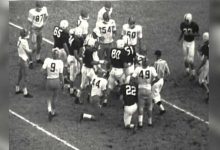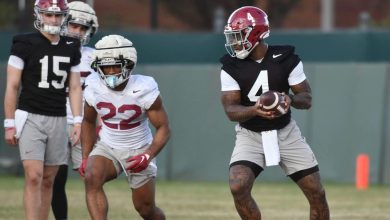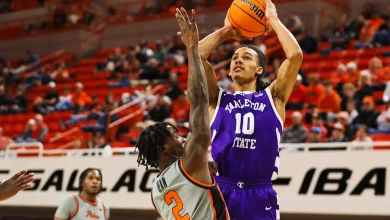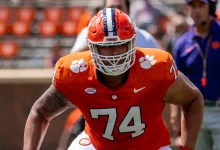Nate Oats highlights Alabama’s four incoming transfers, praising their talent and calling one addition a player with “unlimited potential” for impact.
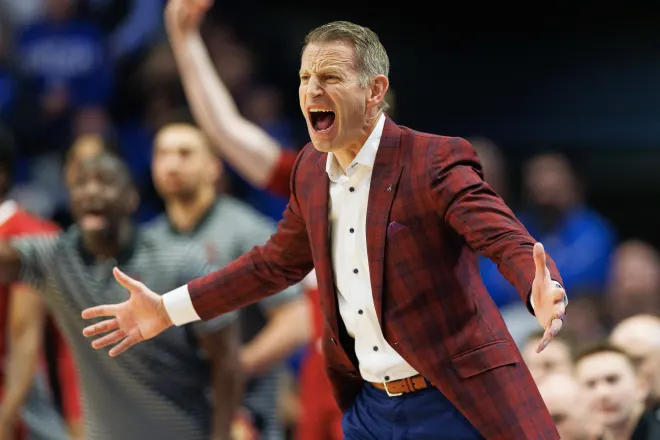
In the ever-competitive world of college basketball, roster turnover is inevitable. For elite programs like the University of Alabama, the challenge is not just replacing talent but upgrading it. Head coach Nate Oats, entering another pivotal season with the Crimson Tide, has once again demonstrated his acumen in building through the transfer portal. For the 2025–26 season, Alabama welcomes four highly regarded transfers, each bringing unique skills and veteran presence to a program with Final Four aspirations.
In a recent media session, Oats expressed his enthusiasm for the group, emphasizing their potential impact. Among the quartet, one name stood out more than the others—not just for what he brings now, but what he could become. Oats didn’t mince words when describing this particular addition, stating, “He has unlimited potential.” That player is 6-foot-11 forward Jarin Stevenson, a hybrid big man with a tantalizing mix of size, skill, and upside.
Let’s dive into a detailed look at all four transfers, what they bring to the Crimson Tide, and how Nate Oats plans to blend them into a championship-contending roster.
1. Clifford Omoruyi – The Defensive Backbone
When Alabama landed Clifford Omoruyi from Rutgers, it signaled their intent to get tougher on the interior. At 6-foot-11 and 240 pounds, Omoruyi is an imposing presence who made a name for himself as one of the top shot blockers in the Big Ten. Over his four years at Rutgers, he averaged 1.8 blocks per game, peaking at 2.1 in his junior season.
What Oats values most about Omoruyi is his defensive tenacity. “Cliff gives us an edge defensively that we’ve been missing,” he said. “He’s long, he’s physical, and he doesn’t shy away from contact. He can anchor a defense.”
Omoruyi’s presence will allow Alabama to play a more aggressive style on the perimeter, knowing they have a shot-blocker to protect the rim. His rebounding, particularly on the defensive glass, should also lead to more transition opportunities—an area where Oats thrives with his fast-paced offensive philosophy.
Offensively, Omoruyi is still a work in progress, but he’s shown flashes as a rim runner and low-post finisher. With better spacing in Alabama’s offense, he could see more efficient scoring opportunities than he had at Rutgers.
2. Houston Mallette – The Sharpshooter
Every elite team needs shooting, and Alabama added one of the best in the portal with the acquisition of Houston Mallette from Pepperdine. At 6-foot-5, Mallette is a classic off-ball guard who excels in catch-and-shoot situations. Over three seasons, he shot over 40% from beyond the arc, with a quick release and deep range.
Mallette’s ability to stretch the floor will be critical, particularly when paired with ball-dominant guards or playmakers. “He’s one of the best pure shooters in the country,” Oats noted. “We can run him off screens, use him in pick-and-pop action, or space him out in the corner. He’ll give defenses fits.”
But Mallette is more than just a shooter. He has shown improved ball-handling and decision-making, making him a viable secondary playmaker. His size also allows him to defend both guard spots, a necessity in Oats’ switching-heavy defensive schemes.
The key for Mallette will be adjusting to the speed and physicality of the SEC, a notable jump from the WCC. If he can hold up defensively, his offense will make him too valuable to keep off the floor.
3. Chris Youngblood – The Veteran Voice
One of the more under-the-radar yet impactful transfers is Chris Youngblood, a 6-foot-4 combo guard who most recently starred at South Florida. A Tuscaloosa native, Youngblood’s return to his hometown brings with it leadership, toughness, and versatility.
At South Florida, he averaged 15.3 points per game and earned American Athletic Conference co-Player of the Year honors. His efficiency and poise stood out, particularly in clutch moments.
“Chris brings maturity and leadership,” Oats said. “He’s a guy who’s been through wars. He knows how to win, and he’s not afraid to take big shots.”
Youngblood’s value will extend beyond the stat sheet. As a vocal presence and emotional leader, he fills a gap that Alabama has occasionally lacked in recent seasons. On the floor, he can play the 1 through 3 positions, giving Oats plenty of lineup flexibility.
His rugged style also suits the SEC’s physical brand of basketball. Whether starting or coming off the bench, Youngblood is expected to be a glue guy whose contributions help hold the roster together during the grind of conference play.
4. Jarin Stevenson – The One with “Unlimited Potential”
And then, there’s Jarin Stevenson.
Reclassified to the 2025 class and enrolling early, Stevenson arrives in Tuscaloosa as perhaps the most intriguing piece of the puzzle. Standing 6-foot-11 with guard-like agility and a developing perimeter shot, Stevenson has all the makings of a modern stretch forward—if not an eventual NBA lottery pick.
Oats couldn’t contain his excitement when discussing Stevenson’s arrival. “He has unlimited potential. The size, the skill, the way he sees the game—he’s a special talent,” Oats remarked. “We’ve had some great players come through here, but Jarin has a chance to be in that upper tier.”
Stevenson’s high school numbers were eye-popping: 21.8 points, 11.7 rebounds, and nearly four blocks per game. His ability to affect games on both ends, especially with weakside rim protection and perimeter shooting, gives Alabama a weapon that’s difficult to prepare for.
Though raw in some aspects—particularly in decision-making and physicality—Stevenson’s ceiling is sky-high. In Oats’ system, which emphasizes spacing, pace, and positional flexibility, Stevenson should thrive. He’ll be used in pick-and-pop actions, trailing three opportunities, and potentially even as a ball handler in certain situations.
The coaching staff is committed to developing his frame and helping him adapt to the college game’s pace. With time, Oats believes Stevenson could be the cornerstone of not just this season, but the program’s future.
Blending the Transfers into the Tide’s Core
One of Nate Oats’ strengths as a coach is his ability to take diverse skill sets and meld them into a coherent, high-octane team. That task will be especially important this season, with the arrival of four new transfers and the return of key veterans.
“We’re not just bringing in talent—we’re bringing in the right kind of talent,” Oats explained. “Guys who want to be here, who want to compete, and who buy into our culture.”
That culture—rooted in effort, spacing, and selflessness—will dictate how quickly these transfers mesh. Omoruyi’s defense, Mallette’s shooting, Youngblood’s leadership, and Stevenson’s all-around game are all complementary. The challenge lies in establishing roles, managing expectations, and maintaining chemistry.
Luckily, Oats has been here before. His teams have frequently featured transfer-heavy lineups, and his reputation for player development continues to attract high-character individuals seeking to take the next step in their careers.
The Big Picture: Alabama’s 2025–26 Outlook
With these transfers in place, Alabama projects to be a top-10 team heading into the season, especially if key returners stay healthy and continue to develop. The SEC will be as strong as ever, with Kentucky, Arkansas, and Tennessee reloading as well. But Alabama’s mix of experience, youth, and star potential gives them a strong chance to win the conference and make a deep NCAA Tournament run.
Stevenson, in particular, could be the x-factor. If he adjusts quickly and realizes even part of his potential, he may not be in college long. But while he’s in Tuscaloosa, he could help elevate the Tide to the Final Four—something that has eluded the program despite several recent close calls.
Nate Oats knows the pressure is there. But with this group, he’s more confident than ever. “This might be the deepest, most versatile team we’ve had,” he said. “And if we can get them to gel, the sky’s the limit.”
Final Thoughts
The transfer portal has changed college basketball, and few coaches have adapted to it better than Nate Oats. Alabama’s 2025–26 incoming class is a testament to strategic roster building, blending defense, shooting, leadership, and raw talent.
As the season approaches, eyes will be on the Crimson Tide to see how this group performs. Clifford Omoruyi will block shots. Houston Mallette will hit threes. Chris Youngblood will lead. And Jarin Stevenson—the one with “unlimited potential”—might just become a star.
If all goes according to plan, Alabama could be on the brink of something special.


